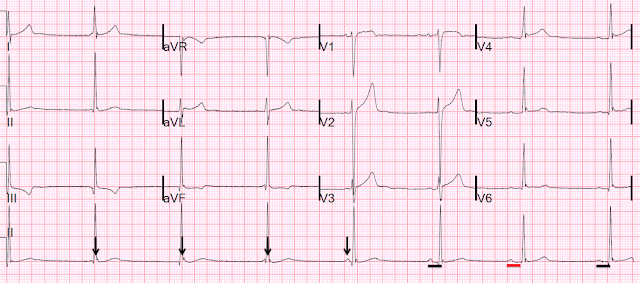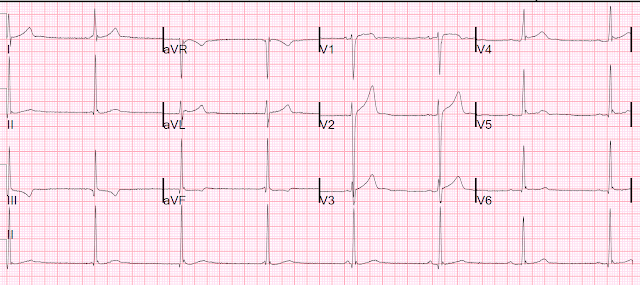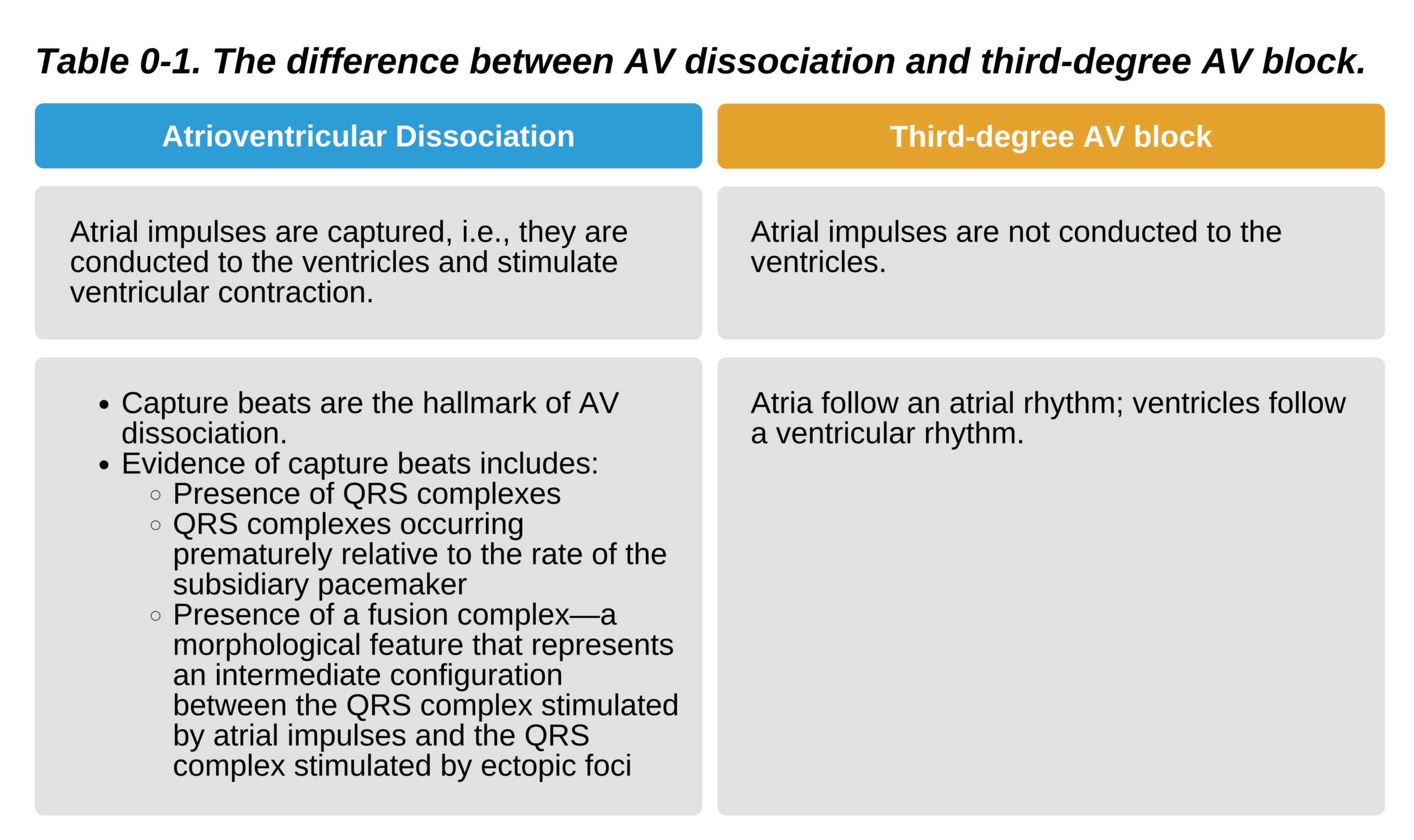Atrioventricular Dissociation
Atrioventricular Dissociation
Atrioventricular dissociation occurs when impulses come from two centers: (1) an atrial activation from the sinus node and (2) an independent ventricular activation that originates from either the AV junction, the His-Purkinje system, or the ventricles. Each impulse penetrates the AV conduction system.
Isorhythmic AV dissociation is present when the ventricular rate is roughly the same as the atrial rate.
AV dissociation is usually seen in healthy individuals and is usually harmless. It can be seen in athletes, during sleep, or in patients who have undergone an open-heart procedure. It may cause a decrease in blood pressure, especially in postoperative patients after heart surgery. It can occur during atrial contraction against a closed tricuspid valve. AV dissociation with interference can be seen in digitalis toxicity.
The atrioventricular conduction system is not affected in AV dissociation.
Ventricular activation in AV dissociation is caused by:
- An enhanced ectopic focus
- Re-entry path from a structural heart disease
- A slowing down of the atrial rate below that of an ectopic focus from the AV conduction system or in the ventricular escape rhythm
Case 5
20-year-old man with lightheadedness.

20-Year-Old Man With Lightheadedness ECG 17

20-Year-Old Man With Lightheadedness ECG After Exercise
In this case, a 20-year-old man presents with lightheadedness exacerbated by effort, especially when playing basketball. The patient has no history of syncopal events, chest pain, palpitations, or shortness of breath.
Figure 8 (a) shows narrow complex bradycardia with a rate of 42 bpm. The arrows in the 6-second lead II depict where the P waves should be. To determine if the atrial impulses occur before the ventricular impulses, the clinician had the patient exercise to increase the atrial rate.
Figure 8 (b) demonstrates the increase in atrial rate, which reveals the presence of the P wave. The rate of the P wave and the frequency of the QRS complex shows that the atrial rate is almost the same as the ventricular rate; hence, this patient has an isorhythmic type AV dissociation.
A third-degree AV block is ruled out because there is no P wave that did not conduct through the ventricles.
17 Smith SW. A young man with lightheadedness and bradycardia, and an impatient AV node. Dr. Smith’s ECG blog website. Accessed April 24, 2021.
http://hqmeded-ecg.blogspot.com/2018/05/a-young-man-with-lightheadedness-and.html
